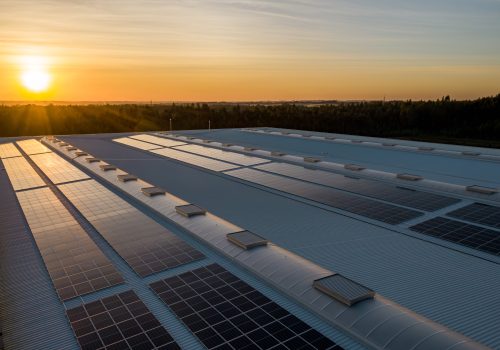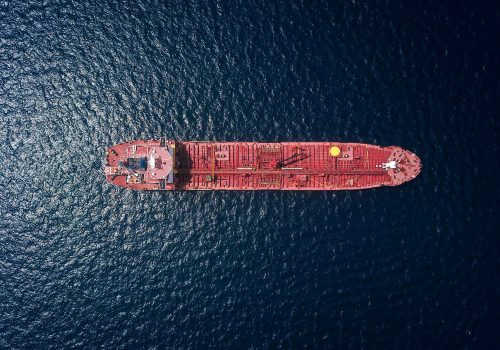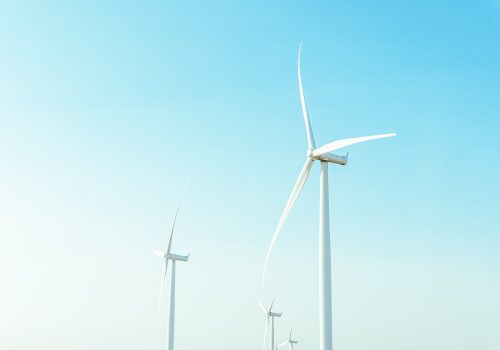Just as a thousand-mile journey begins with a single step, the United States is looking to build out its offshore wind (OSW) capacity from a standing start. US offshore wind deployment currently lags other regions – badly. In October 2022, the US had deployed only 42 megawatts (MW) of offshore wind energy. US offshore deployment is currently outmatched by several economies, including China (which installed 17 gigawatts (GW) of OSW capacity last year alone), the European Union (EU), the European Free Trade Association—and even Vietnam and Taiwan.
The US may be emerging as a major OSW player, however. As of this writing, the US Energy Information Administration reports that approximately 7.5 GW of OSW capacity are already in queue to hit the US grid by 2029. Moreover, the United States has set a goal of deploying 30 GW by 2030. To catalyze deployment of offshore wind, a vital but nascent technology, the US is embarking on an inchoate but emerging strategy: reducing permitting time and incentivizing capital to enter offshore wind. While significant challenges remain, there are reasons to be cautiously optimistic about the future of US offshore wind.
Permitting reform: Rapid law administration is needed
The United States seeks to accelerate offshore wind deployment by reducing permitting times for offshore wind. US infrastructure projects, especially clean energy projects, face notoriously slow construction times due to a variety of legal and regulatory burdens. The National Environmental Policy Act (NEPA) is often a bugbear of various energy projects, with reviews—even for renewable projects—taking years before approval. Fortunately, however, OSW projects are not subject to NEPA reviews, according to a June 2021 ruling from the DC Circuit Court of Appeals. In the wake of the landmark ruling, the Bureau of Ocean Energy Management (BOEM) released new guidance in June 2022 on limiting the number of alternatives studied for environmental reviews. Many analysts, such as Joshua Kaplowitz of American Clean Power, praised BOEM’s new guidance, saying “[the new criteria] will help expedite the environmental review process by limiting the amount of time that agencies spend suggesting—and that BOEM subsequently spends analyzing—inappropriate and ineffective alternatives whose consideration will not improve the environmental review process or projects themselves.”
Despite these legal advances, which promise to reduce permitting times, regulatory hurdles continue to constrain project development. Stakeholders express that it is not due to a lack of will: on the contrary, regulators often simply lack the personnel to determine the environmental assessments of different projects and perform other tasks. For instance, while there are 42 MW of OSW capacity currently installed, there are nearly a thousand times that amount – about 40,000 MW – in various stages of development. Unsurprisingly, regulatory personnel have not been able to keep pace with the surge in new permitting requests. Indeed, some developers are calling for a doubling or tripling of headcount at offshore wind-relevant agencies at both the federal and state levels, to facilitate timely approvals.
Meshed grids could be the next frontier in using smart, limited regulation to advance offshore wind. Meshed grids, which cluster wind farms to create shared connections to shore, limit the number of shore connection cables, and allow for electricity diversion in the event of a fault. While the technical model is already being enabled, the commercial model has yet to be worked out. Who builds, owns, and pays is perhaps a step for future regulatory efforts.
The Inflation Reduction Act and incentivizing capital deployment
The Inflation Reduction Act (IRA) aims to encourage investments in offshore wind and clean energy more broadly. The IRA’s offshore wind provisions have already been explored at length, but some points are worth emphasizing. By extending fiscal policy measures which can run on “autopilot,” the IRA seeks to provide certainty to investors while incentivizing capital to deploy to the sector. Importantly, the legislation also aims to accelerate construction by granting the most generous incentives to projects that begin construction before 2024, with provisions becoming less lucrative over time. Furthermore, in recognition of OSW’s nascent supply chains, domestic content requirements are lower for offshore than onshore wind. The IRA seeks to spur significant cumulative investment, create an ecosystem of developers, and produce cost declines as the industry moves along the learning curve.
Uncertainties and opportunities as the journey begins
While the United States may have, consciously or not, developed an offshore wind strategy, the journey has only just begun. Substantial permitting and regulatory challenges remain, opponents of offshore wind may able to slow or even halt projects via lawsuits, and not-in-my-backyard concerns could lead to schedule slippages or project cancellations. Moreover, schedule delays can impose punishing costs, due to the new normal of higher interest rates. With higher input costs from inflation and more expensive financing costs already pressuring marginal projects, this year could see several projects scuttled. Finally, the “manning and crewing” requirements bill could substantially raise developers’ costs and, potentially, torpedo a substantial portion of planned OSW capacity.
Despite these uncertainties, there are several reasons for optimism. By setting its strategic “30 GW by 2030” objective, the US has committed to at least attempting to achieve additional offshore wind capacity. While the emerging strategy of using permitting reform and the Inflation Reduction Act will very likely face setbacks, there will be ways to refine the legislation and issue correctives. Permitting reform before the US legislature represents an avenue for policymakers to accelerate US energy infrastructure, including in the OSW space. Finally, the US industrial base is sizable, while offshore wind developers are eager to tap into a potentially lucrative market in the world’s biggest economy.
US offshore wind is in its early days, and its future is not yet written. As with many journeys, however, decisions made in the beginning can influence the path decades later. Choices in permitting reforms and the “manning and crewing” requirements bill could determine if US offshore wind succeeds or fails.
Joseph Webster is a senior fellow at the Atlantic Council Global Energy Center.
Meet the author
Related content
Learn more about the Global Energy Center

The Global Energy Center develops and promotes pragmatic and nonpartisan policy solutions designed to advance global energy security, enhance economic opportunity, and accelerate pathways to net-zero emissions.
Image: The Block Island Wind Farm. (US Department of Energy, Rawpixel, CC0 1.0) https://creativecommons.org/publicdomain/zero/1.0/




